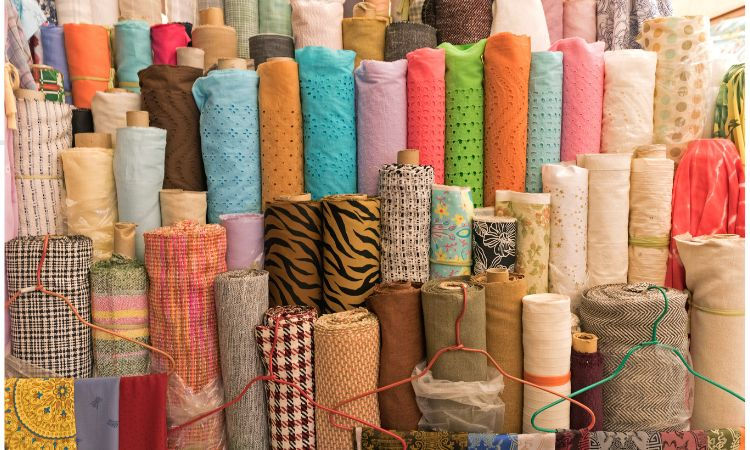Global Textile Market Trends and Future Outlook 2025–2034
- ankit Vijayran
- Aug 22
- 4 min read

The textile market has always been a vital part of human civilization, shaping cultures, economies, and lifestyles across the globe. From hand-woven fabrics in ancient times to today’s high-tech smart textiles, the industry has undergone immense transformation. As fashion, sustainability, and technology continue to evolve, the global textile market is witnessing significant growth and innovation.
In this blog, we’ll explore the key factors driving the textile market, its future outlook, regional insights, and what businesses and consumers should know about this ever-expanding industry.
Understanding the Textile Market
The textile market share refers to the global production, distribution, and consumption of fibers, yarns, fabrics, and finished apparel. It covers natural fibers like cotton, silk, and wool, as well as synthetic fibers such as polyester, nylon, and acrylic.
The market plays a crucial role in global trade, employment, and lifestyle. From fashion clothing and industrial fabrics to medical textiles and home furnishings, textiles are part of almost every sector. The demand for textiles is influenced by several factors, including population growth, rising disposable income, and the increasing need for sustainable alternatives.
Key Trends Shaping the Textile Market
Growing Demand for Sustainable Textiles
Consumers are becoming more conscious about the environmental impact of their clothing choices. This shift has created a surge in demand for eco-friendly fabrics such as organic cotton, hemp, bamboo, and recycled polyester. Brands are also investing in circular fashion models, where textiles are reused, recycled, or upcycled to minimize waste.
Technological Advancements in Fabric Production
Technology is reshaping the textile market in remarkable ways. Smart textiles, wearable fabrics with sensors, and automated weaving machines are revolutionizing how materials are produced and used. Advanced dyeing techniques are also reducing water usage, making the industry more sustainable.
Fast Fashion vs. Slow Fashion
While fast fashion continues to dominate due to affordability and accessibility, slow fashion is steadily gaining traction. Consumers are prioritizing quality, durability, and ethical sourcing, leading to a gradual shift in the textile market’s dynamics.
Rise of Technical and Industrial Textiles
Beyond clothing, textiles are increasingly used in automotive, healthcare, agriculture, and defense industries. These technical textiles are engineered for specific purposes, such as fire resistance, waterproofing, or medical applications, broadening the scope of the textile market.
Regional Insights into the Textile Market
Asia-Pacific: The Global Powerhouse
Countries like China, India, Bangladesh, and Vietnam dominate the textile market due to their large-scale manufacturing capabilities and cost-effective labor. Asia-Pacific remains the largest exporter of textiles, supplying fabrics and finished products to global fashion giants.
Europe: Focus on Luxury and Sustainability
Europe is known for its luxury brands and high-end textiles. Countries such as Italy and France lead in premium fabrics, while Northern European countries are pushing sustainability with innovative eco-friendly textiles.
North America: Technology and Innovation
The U.S. textile market is characterized by innovation, with companies investing heavily in smart fabrics, technical textiles, and sustainable production methods. Consumer demand for eco-conscious apparel is also shaping the industry’s growth.
Middle East & Africa: Growing Opportunities
The Middle East and Africa are emerging textile markets, with increasing investments in textile infrastructure and fashion retail. Turkey, in particular, has established itself as a key textile hub connecting Europe and Asia.
Challenges Facing the Textile Market
While opportunities are abundant, the textile industry also faces challenges. One of the biggest concerns is the environmental impact of mass production, particularly in fast fashion. Excessive water consumption, chemical pollution, and textile waste remain pressing issues.
Another challenge is supply chain disruption. The COVID-19 pandemic highlighted the vulnerability of global textile supply chains, prompting businesses to rethink sourcing and manufacturing strategies. Rising labor costs and stricter environmental regulations are also reshaping how companies operate.
Future Outlook of the Textile Market
The future of the textile market looks promising, with innovation and sustainability taking center stage. Experts predict significant growth in eco-friendly textiles, technical fabrics, and digital solutions for supply chain management. The integration of AI and automation will improve production efficiency, while consumer awareness will drive brands to adopt more transparent and ethical practices.
As the market evolves, businesses that embrace sustainability, technology, and adaptability will stand out. Consumers, too, will play a vital role by making conscious choices that support environmentally friendly practices.
FAQs about the Textile Market
What is driving growth in the global textile market?The textile market is growing due to rising consumer demand, population growth, technological advancements, and the increasing popularity of sustainable textiles.
Which country is the largest producer of textiles?China is the world’s largest textile producer, followed by India and other Asian countries like Bangladesh and Vietnam.
How is sustainability impacting the textile industry?Sustainability has become a major trend, with brands adopting eco-friendly materials, recycling programs, and transparent supply chains to reduce environmental impact.
What are technical textiles?Technical textiles are fabrics designed for specific functions rather than aesthetics. They are widely used in healthcare, automotive, defense, and construction industries.
Is fast fashion declining?Fast fashion is still popular, but growing consumer awareness and the rise of slow fashion are gradually changing market preferences.












Comments